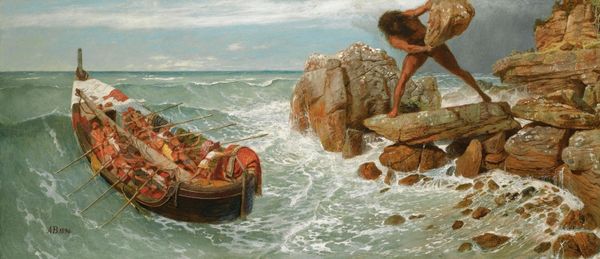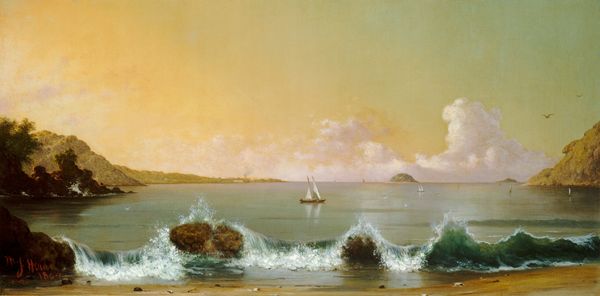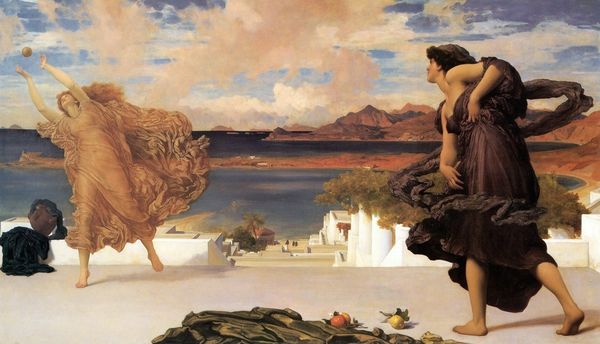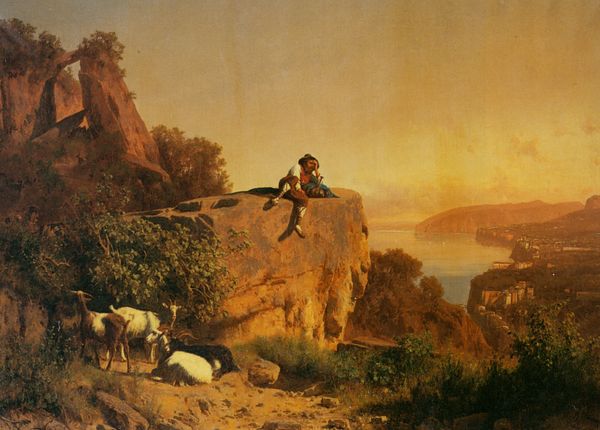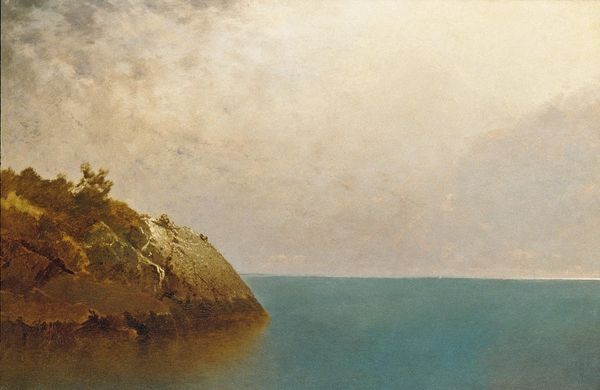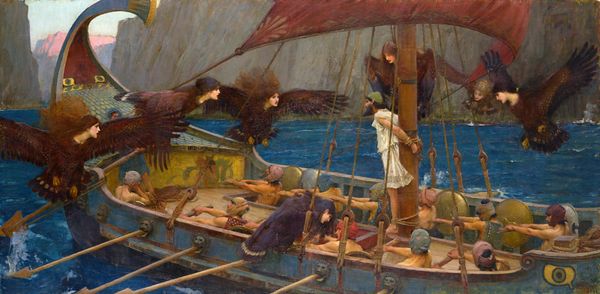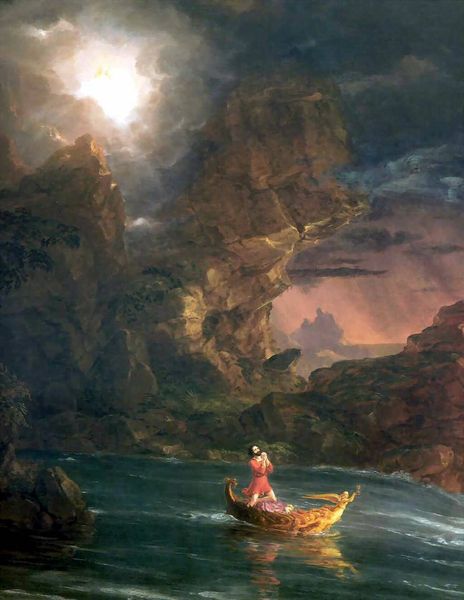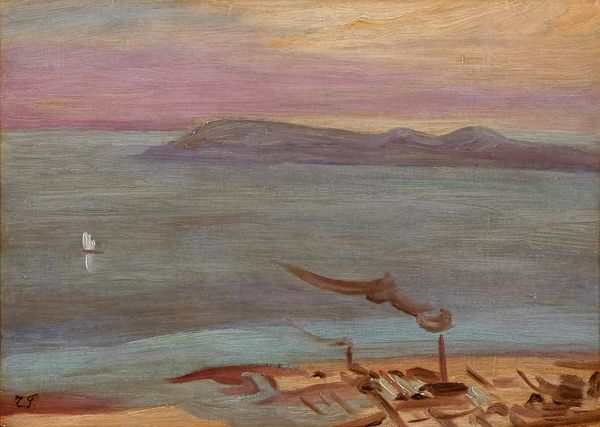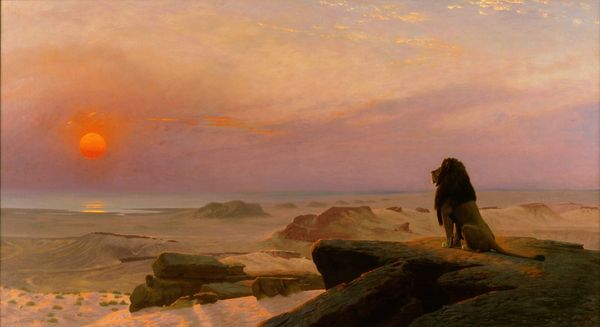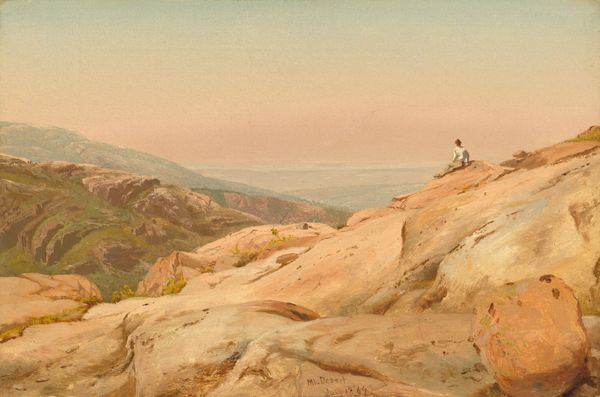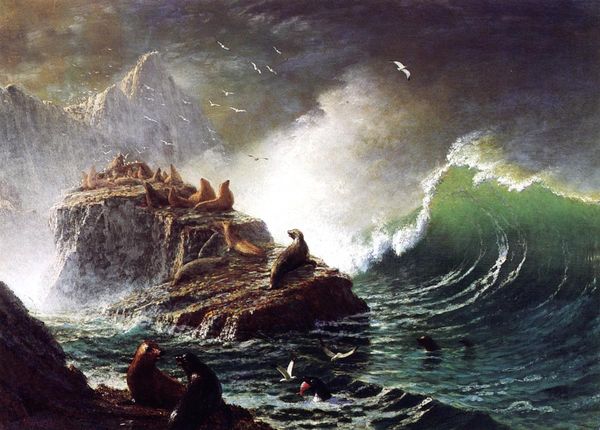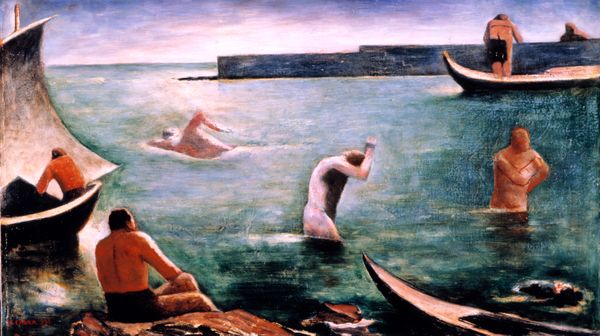
painting, oil-paint
#
painting
#
oil-paint
#
landscape
#
classical-realism
#
oil painting
#
roman-mythology
#
mythology
#
genre-painting
#
history-painting
#
academic-art
#
realism
Copyright: Public domain
Curator: We're looking at an oil painting, "Polyphemus," attributed to Jean-Léon Gérôme, capturing a scene steeped in classical mythology. Editor: The palette is really interesting here. It's mostly light blues and greens that create this pervasive tranquility. The whole painting gives off a serene feeling, which really clashes with the monstrous act that's about to occur, right? Curator: Exactly. Gérôme was a master of academic art, prioritizing precision in form. Note how the composition focuses our attention first on Polyphemus, hulking on the cliff, and then leads the eye to the distant, almost fragile ship. The lines are very sharp, lending this a kind of verisimilitude. Editor: The figure of Polyphemus feels decidedly heroic, and I'm hesitant to embrace this romantic portrayal of a violent monster. The narrative here feels problematic; is the viewer meant to empathize with this figure because of the setting, almost diminishing his atrocious acts? There are many ways to explore such narratives, some that perpetuate dangerous tropes. Curator: I understand the reading through that lens. Gérôme presents a complex image, right? We have this raw, physical power juxtaposed with an idyllic landscape, causing us to question the nature of heroism itself. Look at the light—how it caresses the rocks, but also throws Polyphemus's face into shadow, almost obscuring his intentions. It's a powerful, albeit disturbing contrast. Editor: Yes, it creates an uncomfortable tension. Is it meant to make the viewer reflect on unchecked power structures, then and now? This contrast reminds us of historical narratives' manipulative potentials in our contemporary sociopolitical environment. How is a past tyrant different from those of our time if their propaganda paints them as justified actors? Curator: Absolutely. He utilizes realism as a method of conveying historical truth. It challenges viewers to consider power and the gaze; and in turn it serves to critique traditional mythology. It encourages us to examine these familiar myths, not simply retell them, but consider how they've come down to us. Editor: True, the aesthetic choices aren't random, but carefully selected for maximum cultural effect, making Gérôme complicit with this historical perspective, rather than above it. It underscores how depictions, seemingly neutral, encode social norms, power, and bias. Curator: A final thought? It urges viewers to question how stories of triumph and heroism affect, conceal, and distort historical accountability. Editor: Precisely! Hopefully, understanding historical context helps prevent us from idealizing those who exercise power without consequence.
Comments
No comments
Be the first to comment and join the conversation on the ultimate creative platform.

